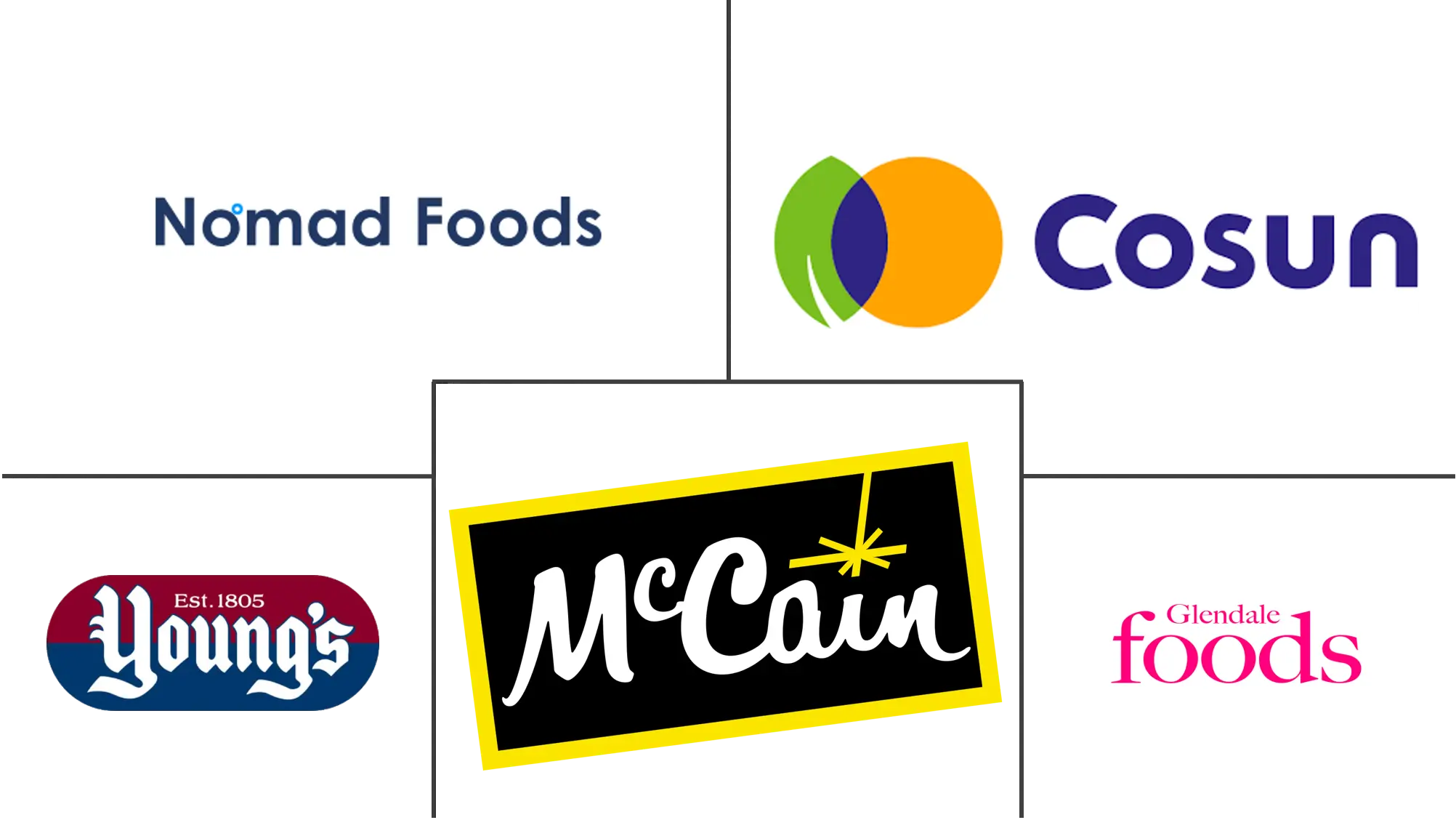Market Size of Europe Frozen Snacks Industry

| Study Period | 2019 - 2029 |
| Base Year For Estimation | 2023 |
| Forecast Data Period | 2024 - 2029 |
| Historical Data Period | 2019 - 2022 |
| CAGR | 6.55 % |
| Market Concentration | High |
Major Players
*Disclaimer: Major Players sorted in no particular order |
Europe Frozen Snacks Market Analysis
Europe Frozen Snacks market is projected to grow at a CAGR of 6.55% during the forecast period.
- The popularity of frozen snacks as a meal-compliment or even meal replacement is increasing rapidly. The increasing trend of snacking, particularly among teenagers and adults, coupled with the rise in the snack frequency among these demographic segments, is expected to boost the frozen snacks market. The demand for frozen food is continuously growing in the region, with frozen snacks showing significant popularity.
- However, the preference for fresh and natural food products, the need for maintaining a constant temperature for the sustainability of frozen foods, and high logistics costs involved, due to crop failure and shortages, act as restraining factors for the market studied.
Europe Frozen Snacks Industry Segmentation
The Europe Frozen Snacks market is segmented by type, distribution channel, and geography. By type, the market studied is segmented into fruit-based snacks, potato-based snacks, meat- and seafood-based snacks, and others. By distribution channel, the market studied is segmented by hypermarket/supermarket, convenience store, online retail stores, and other distribution channels. The market study also includes geographical analysis. By geography, the market covers country level analysis of developed and emerging economies like the United Kingdom, France, Germany, Spain, Italy, and Russia.
| Type | |
| Fruit-based Snacks | |
| Potato-based Snacks | |
| Meat- and Seafood-based Snacks | |
| Others |
| Distribution Channel | |
| Hypermarket/Supermarket | |
| Convenience Stores | |
| Online Retail Stores | |
| Other Distribution Channels |
| Geography | |
| United Kingdom | |
| France | |
| Germany | |
| Spain | |
| Italy | |
| Russia | |
| Rest of Europe |
Europe Frozen Snacks Market Size Summary
The Europe Frozen Snacks market is experiencing a robust growth trajectory, driven by the increasing popularity of frozen snacks as meal complements or replacements. This trend is particularly pronounced among teenagers and adults, who are snacking more frequently. The demand for frozen foods is on the rise, with frozen snacks gaining significant traction across the region. However, challenges such as a preference for fresh and natural food products, the necessity of maintaining consistent temperatures for frozen food sustainability, and high logistics costs due to crop failures and shortages pose constraints to market expansion. Despite these challenges, the market continues to thrive, supported by the appeal of frozen snacks like potato products, which are favored for their energy-providing carbohydrates and health benefits.
The market landscape is characterized by a high level of consolidation, with major players like Nomad Foods Limited, Südzucker AG, and Glendale Foods Limited holding significant market shares through brands such as Bird's Eye and Yankee. These companies leverage their strong household penetration and focus on product innovation to maintain competitive advantage. The retail landscape and advancements in cold chain technology further bolster market growth. Germany stands out as a significant consumer of frozen snacks, with substantial imports and a growing preference for convenient, health-oriented frozen snack options. The competitive dynamics are intensified by the high profitability of the industry, prompting manufacturers to adopt aggressive strategies to capture market share.
Europe Frozen Snacks Market Size - Table of Contents
-
1. MARKET DYNAMICS
-
1.1 Market Drivers
-
1.2 Market Restraints
-
1.3 Industry Attractiveness - Porter's Five Forces Analysis
-
1.3.1 Threat of New Entrants
-
1.3.2 Bargaining Power of Buyers/Consumers
-
1.3.3 Bargaining Power of Suppliers
-
1.3.4 Threat of Substitute Products
-
1.3.5 Intensity of Competitive Rivalry
-
-
-
2. MARKET SEGMENTATION
-
2.1 Type
-
2.1.1 Fruit-based Snacks
-
2.1.2 Potato-based Snacks
-
2.1.3 Meat- and Seafood-based Snacks
-
2.1.4 Others
-
-
2.2 Distribution Channel
-
2.2.1 Hypermarket/Supermarket
-
2.2.2 Convenience Stores
-
2.2.3 Online Retail Stores
-
2.2.4 Other Distribution Channels
-
-
2.3 Geography
-
2.3.1 United Kingdom
-
2.3.2 France
-
2.3.3 Germany
-
2.3.4 Spain
-
2.3.5 Italy
-
2.3.6 Russia
-
2.3.7 Rest of Europe
-
-
Europe Frozen Snacks Market Size FAQs
What is the current Europe Frozen Snacks Market size?
The Europe Frozen Snacks Market is projected to register a CAGR of 6.55% during the forecast period (2024-2029)
Who are the key players in Europe Frozen Snacks Market?
Nomad Foods Limited , Cooperatie Koninklijke Cosun U.A., McCain Foods Limited , Young’s Seafood Limited and Dr. August Oetker KG are the major companies operating in the Europe Frozen Snacks Market.

